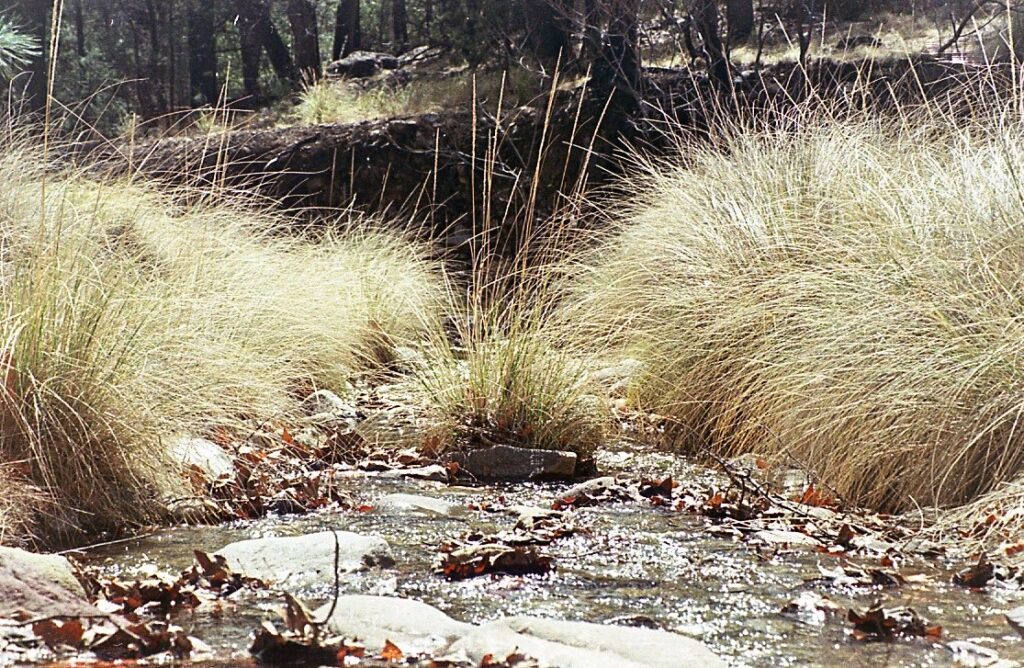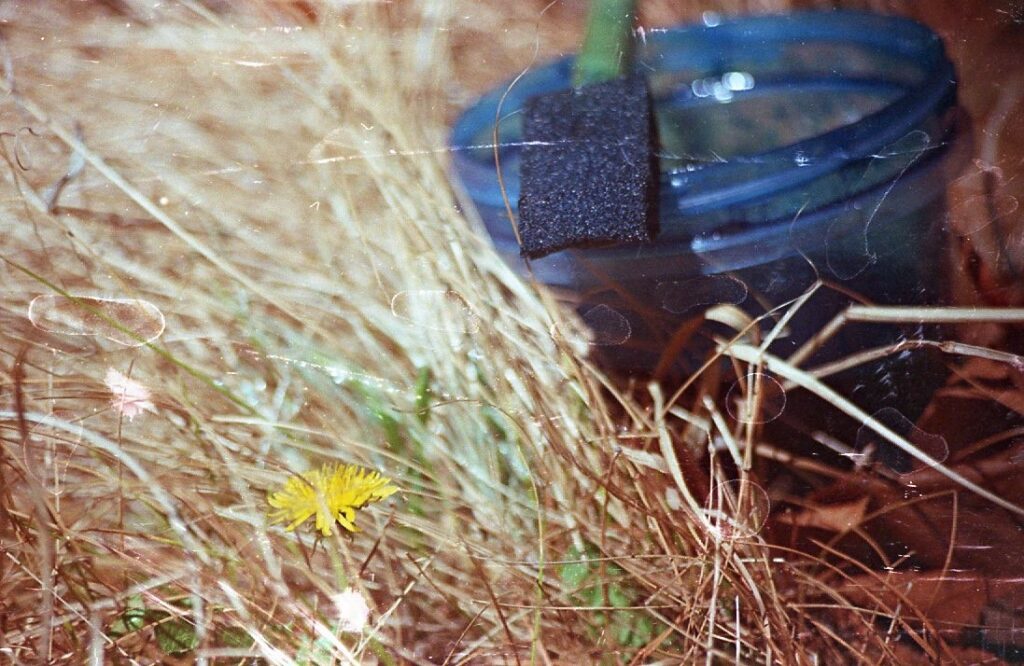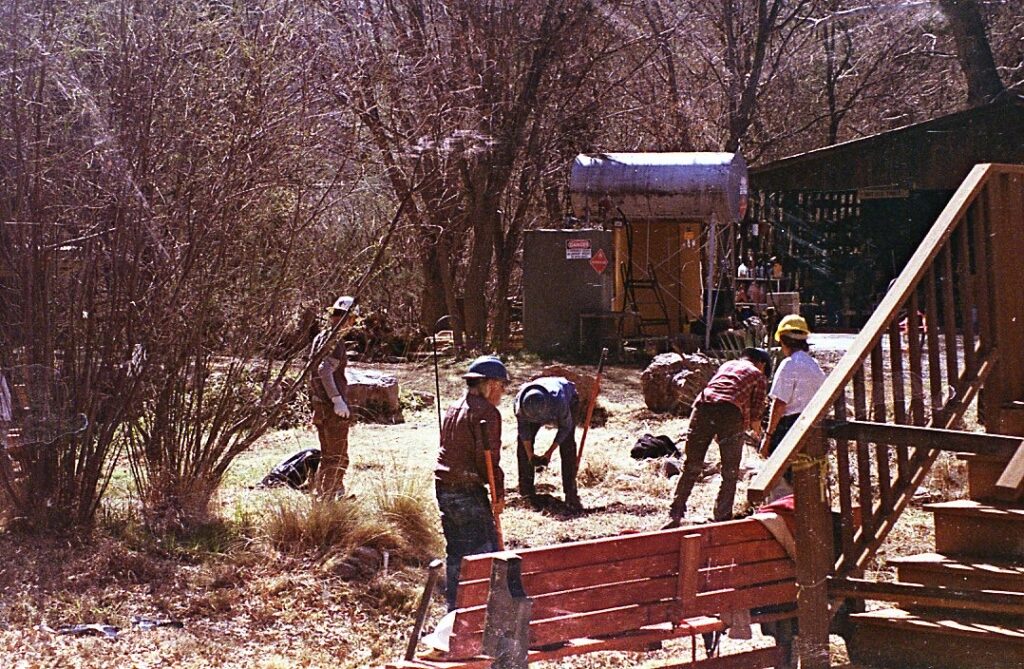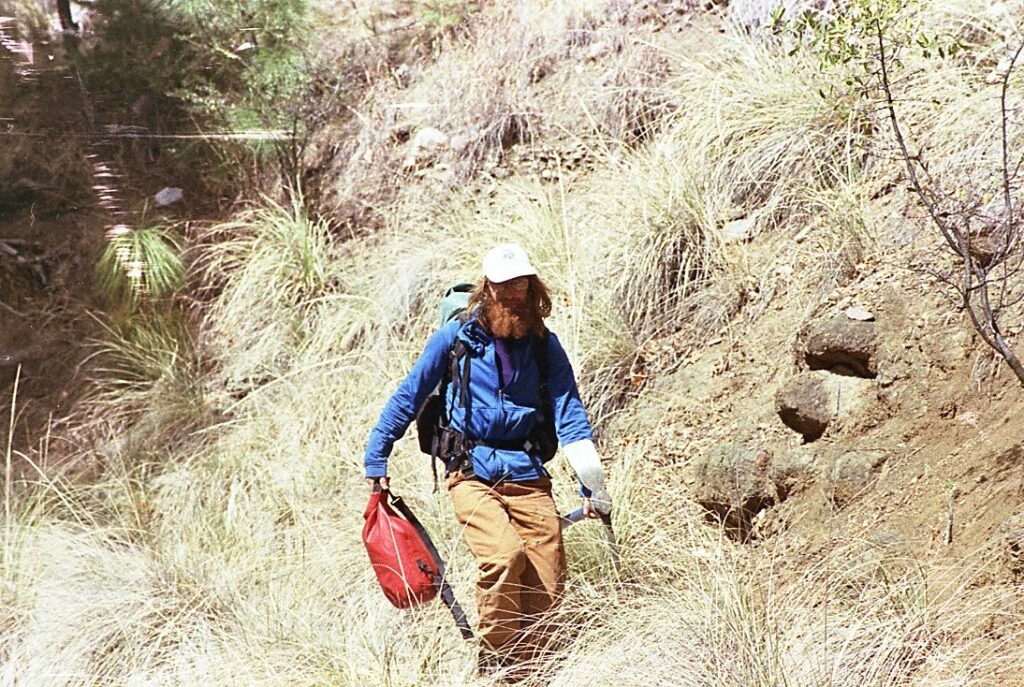
Written by Bradley Harmon, Wild Stew Field Crew Member.
What is the price of protecting these lands? These lands that captivate us, heal us, and support us? Us humans who, in spite of our singular abilities, are just as dependent on the land as the worms, spiders, and skunks that we feel higher than? What price do you and I have to pay to contribute to the preservation of these mountains and rivers we love so much? Maybe the answer to that is better left to someone with a higher education, but nevertheless, I will submit my two cents to those who will listen.
The price I paid last hitch was sore knees, a few chilly mornings, and some time away from home. But I found that price was more than offset by the peaceful and quiet air of the Chiricahua mountains, the calming lullaby sung by Cave Creek, and the gratification of knowing that I am playing my part in keeping these mountains as wild and as healthy as possible.

This hitch was all about Paspalum Dilatatum, otherwise known as Dallis Grass, a pesky invasive grass that had only just started to take hold on Cave Creek. On Wednesday Sam and I did some scouting to make sure we had an idea of the extent of the outbreak, and to make sure we had a grasp on how to I.D the grass. On Thursday we met up with some volunteers from Portal and Rodeo, along with Dirk Sigler, president of the Chiricahua Regional Council, at the Southwestern Research Center. Together we struck the first blow at cutting this invasive off at the knees. With pick-mattocks and rogue hoes we began to rid the research station of this grass and we made good progress. The rest of the hitch, Sam and I treated the remainder of our project area along the North Fork of Cave Creek with herbicide. We spent our days slowly walking along the banks, our eyes burning holes between the blades of native grasses, looking for this tricky invasive. Once we found one patch, we would squat down with our containers full of herbicide and our foam paint brushes and carefully paint each blade of grass in a patch. Once we finished a patch, we would quickly realize that there was much more than we had originally thought hiding between rocks and within other grasses. For me, spotting this grass was like a bell curve. At first, I missed a lot of what was in front of me. Later on, I felt like I had a sixth sense for this grass, having noted where the water is likely to carry the seeds to, but by the last day I felt like I was blind to dallis grass.

The hitch ended with some delicious homemade pizza from Dirk Sigler, one last scouting hike to understand the extent of the spread, and a final sweep of our project area. This was only the first blow against the invasive paspalum dilatatum, and although we will have to wait to see how effective it was, I am confident that we will make a significant impact on Cave Creek and stop the invasion. This hitch reaffirmed for me that, despite whatever “strife” comes in this line of work, protecting the lands that I love, it is repaid ten fold by the land.

Special thanks to the Chiricahua mountains for the peace and clarity.
And to Dirk Sigler for the pizza and the generous donation of film cameras to fuel my film photography addiction.








